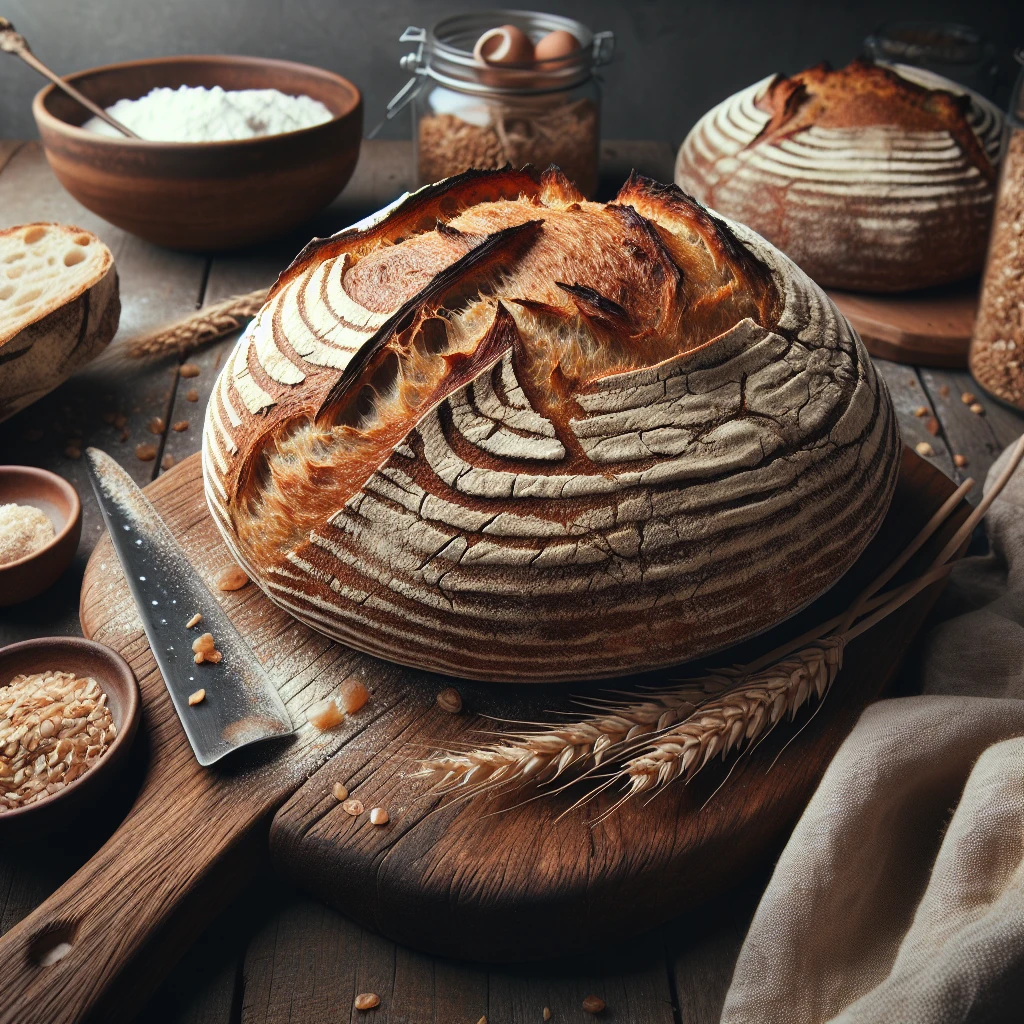
There's something timeless about a loaf of traditional sourdough bread. Its tangy flavor and chewy texture make it a beloved staple in many homes. This recipe is all about simplicity, with just a few ingredients and some time, you'll be rewarded with a loaf that's nothing short of magical.
All-purpose flour is the backbone of our bread, providing structure and a neutral flavor that lets the sourdough's tang shine. Water is essential for activating the gluten and bringing the dough together. Our star, the sourdough starter, not only leavens the dough but also imparts that signature sour taste. Lastly, salt enhances the flavors and strengthens the dough's gluten structure.
This sourdough bread is perfect for a rustic charcuterie board with cured meats, cheeses, and olives. It's also divine toasted with a smear of butter and a sprinkle of flaky sea salt, or as the base for an open-faced sandwich with avocado and poached eggs.
Start by mixing together the flour and water in a large bowl. Don't worry about getting it perfectly smooth at this stage; just make sure all the flour is hydrated. Then, cover the bowl and let it rest for 30 minutes. This resting period is known as autolyse, and it helps to kickstart gluten development.
Next, add your active sourdough starter and salt to the bowl. Mix until you have a rough dough. It might look a bit shaggy, but that's perfectly fine. Transfer it onto a floured surface and knead it for about 10 minutes. You'll know it's ready when it feels smooth and elastic under your hands.
Place the kneaded dough into a lightly oiled bowl, cover it with a damp cloth, and let it rise at room temperature for 4 hours. During this time, you'll want to perform a stretch and fold every hour. This simply involves gently stretching the dough and folding it over itself, which helps with gluten development and gives your bread more structure.
Once the dough has risen, shape it into a nice round loaf. A floured banneton basket is ideal for proofing, but a bowl lined with a tea towel will also work. Cover it up and let it proof in the refrigerator for 12 hours or overnight. This slow, cold fermentation is key to developing that deep, complex flavor we're after.
When you're ready to bake, preheat your oven to 450°F (232°C) with your Dutch oven inside. Carefully transfer the dough into the preheated Dutch oven, score the top with a sharp knife or lame, and cover it with the lid. Bake for 20 minutes, then remove the lid and continue baking for another 25 minutes until the crust is a gorgeous golden brown.
Once out of the oven, let the bread cool completely on a wire rack before slicing into it. This cooling period is crucial, as it allows the interior to finish setting up.